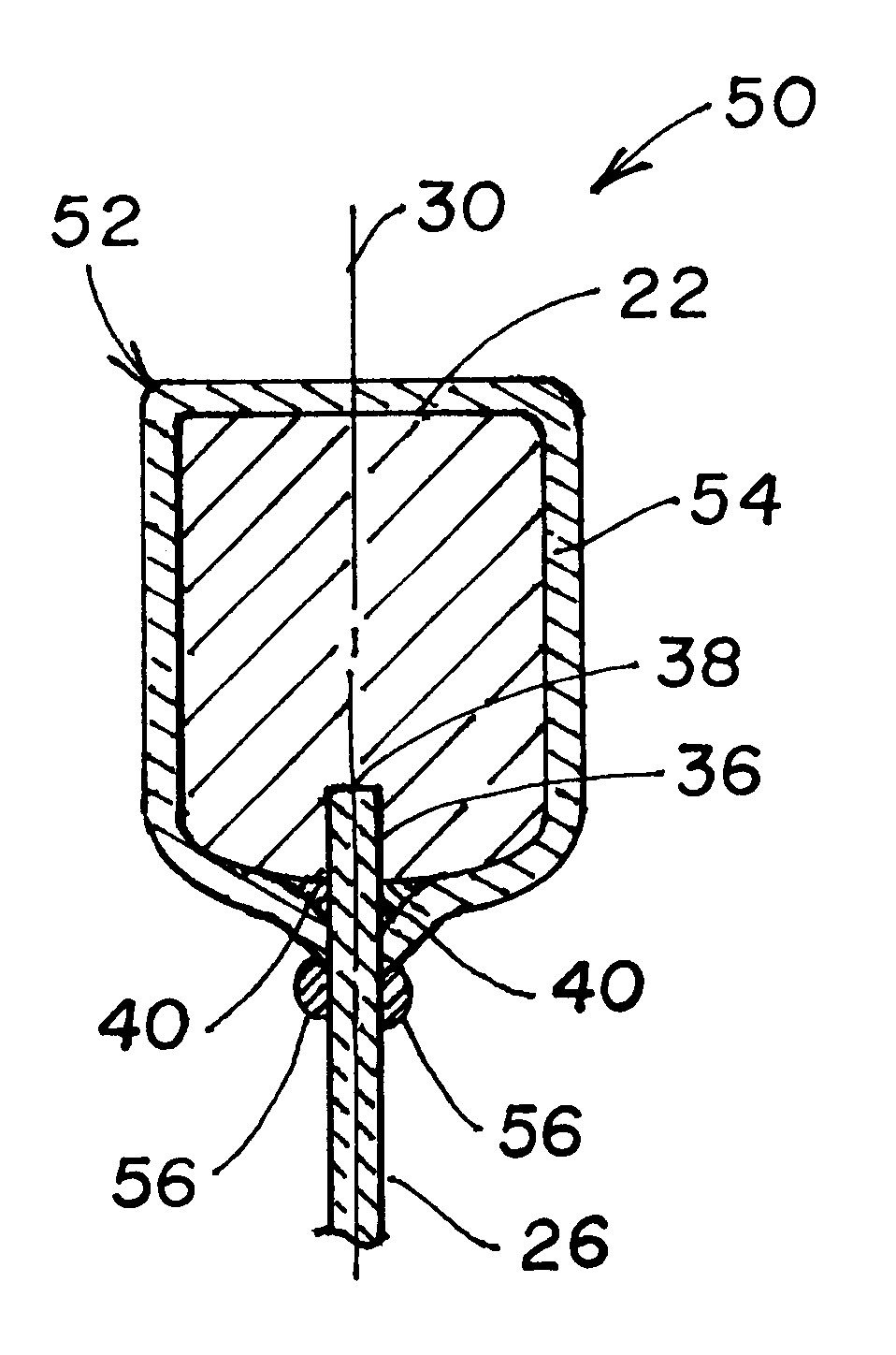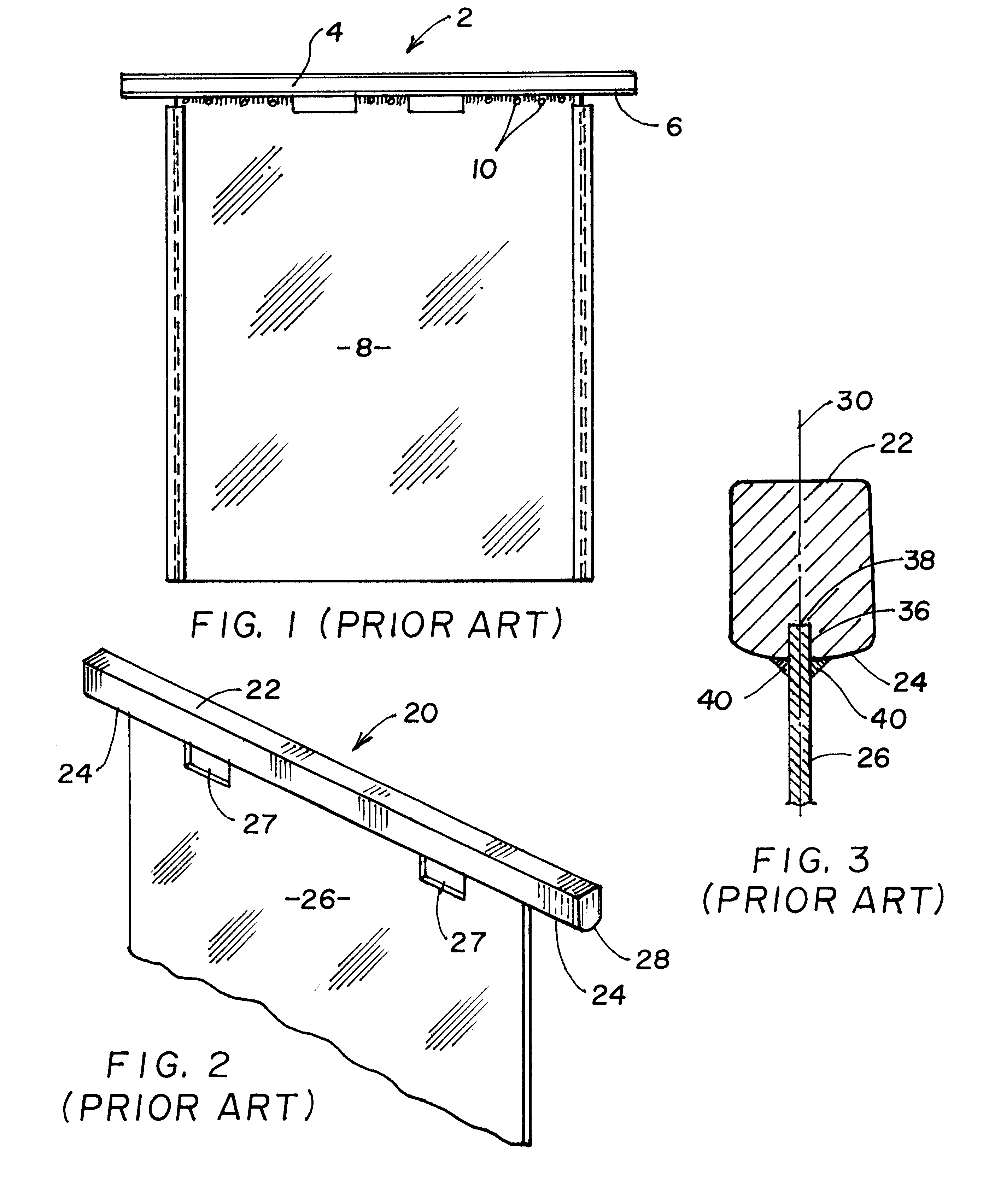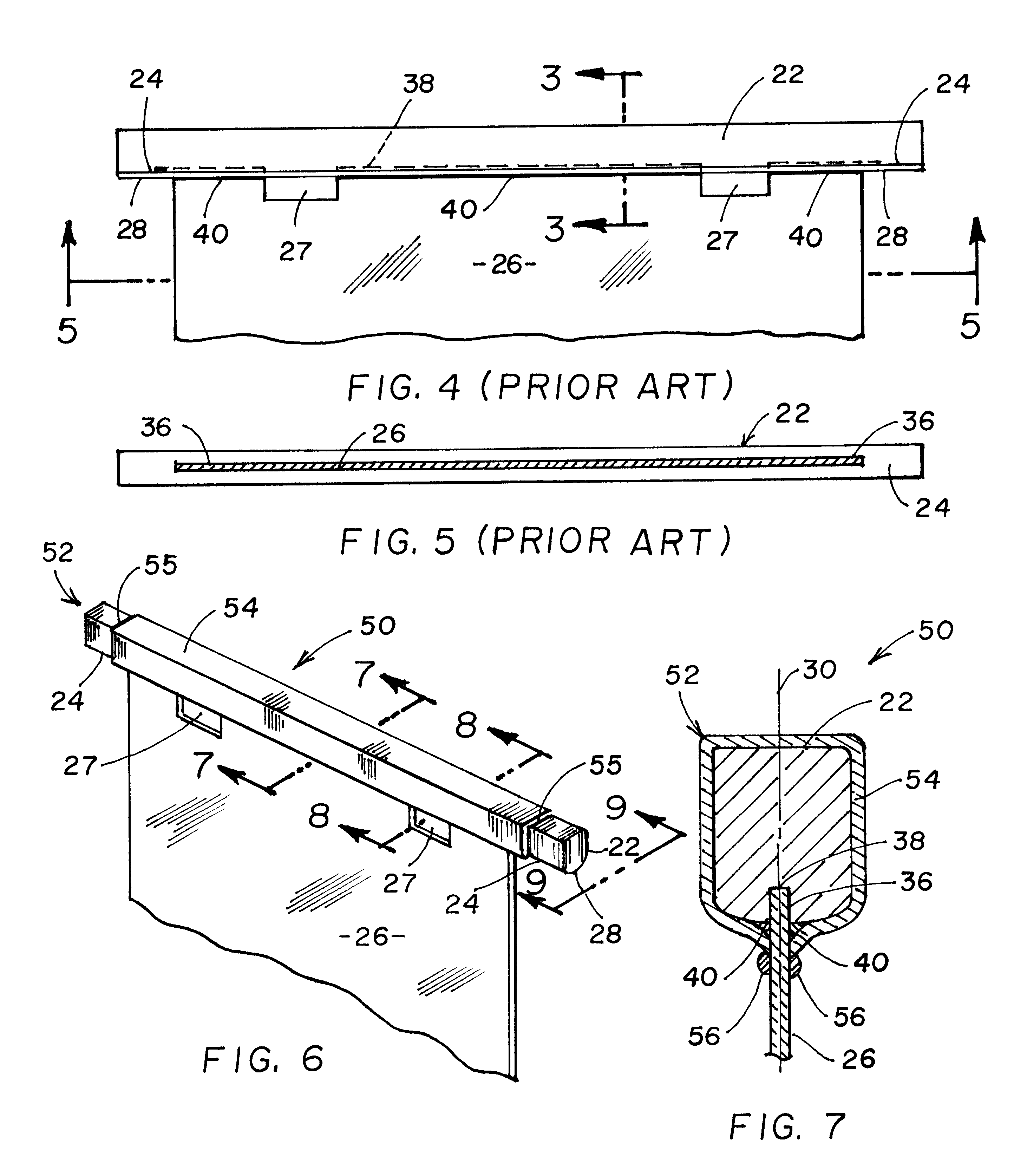Steel-clad cathode for electrolytic refining of copper
a technology of electrolytic refining and stainless steel, which is applied in the direction of electrical-based machining electrodes, instruments, manufacturing tools, etc., can solve the problems of difficult removal and/or contamination of deposited metal, difficulty in maintaining a uniform current density, and relatively expensive electrode types, etc., to achieve the effect of simplifying the assembly process and ensuring strength and durability
- Summary
- Abstract
- Description
- Claims
- Application Information
AI Technical Summary
Benefits of technology
Problems solved by technology
Method used
Image
Examples
Embodiment Construction
The heart of this invention lies in the idea of using a solid copper hanger-bar and cladding it with a stainless steel sheet formed around the hanger bar and welded to the stainless-steel mother plate. The result is a hanger bar of maximum mechanical strength, reduced resistance and correspondingly reduced heat generation. In addition, the steel-to-steel weld provides increased structural support for the electrode. According to another aspect of the invention, the steel cladding is roll formed around the solid copper bar, which provides a rapid and efficient way to envelope the bar ensuring good contact between the copper and steel surfaces. As used herein, the term "solid" is intended to mean without an internal cavity.
As illustrated in elevational view in FIG. 1, an electrolytic cathode 2 according to the prior art includes a stainless-steel hanger bar 4 with a flat underside 6 and a mother plate 8 (normally stainless steel) that abuts and is attached to the underside 6 by means o...
PUM
| Property | Measurement | Unit |
|---|---|---|
| thickness | aaaaa | aaaaa |
| thickness | aaaaa | aaaaa |
| thickness | aaaaa | aaaaa |
Abstract
Description
Claims
Application Information
 Login to View More
Login to View More - R&D
- Intellectual Property
- Life Sciences
- Materials
- Tech Scout
- Unparalleled Data Quality
- Higher Quality Content
- 60% Fewer Hallucinations
Browse by: Latest US Patents, China's latest patents, Technical Efficacy Thesaurus, Application Domain, Technology Topic, Popular Technical Reports.
© 2025 PatSnap. All rights reserved.Legal|Privacy policy|Modern Slavery Act Transparency Statement|Sitemap|About US| Contact US: help@patsnap.com



